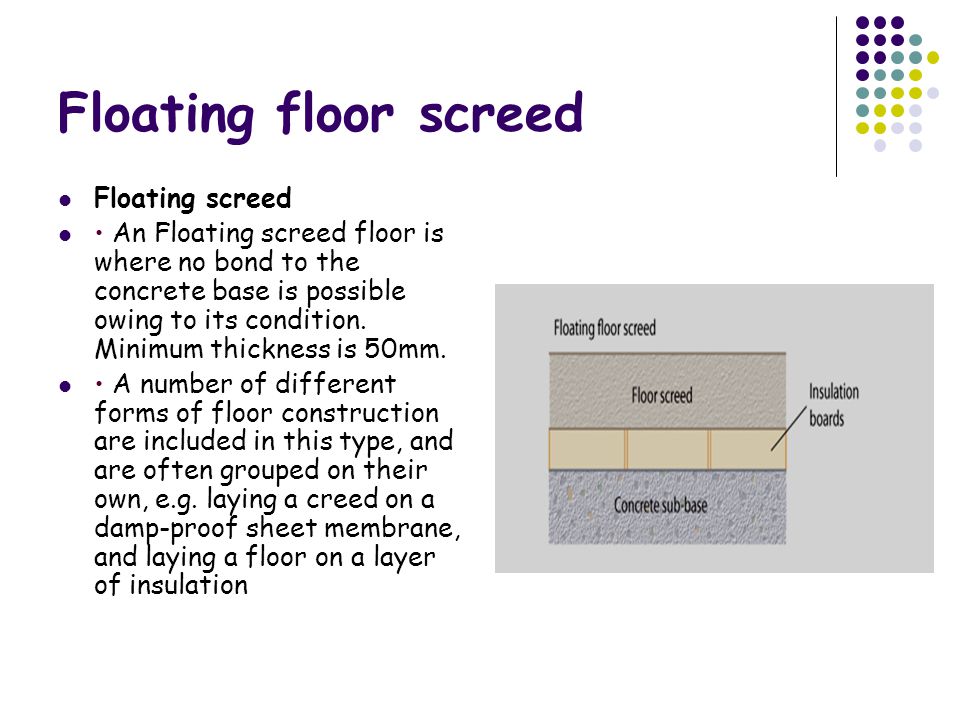The maximum floor screed thickness of a modified sand and cement screed can be of any depth although you might wonder why you would want it very thick.
Floating floor screed depth.
I m andy parkin managing director of the multi award winning speed screed.
With the drive to gain an a1 rating in modern dwelling the use of insulation in a floor build up is becoming the normal practice.
Whenever we are talking about floating screed thickness and generally we tend to be talking how thin a screed can go down to we have got to look and examine what the substrate is and in this case it is a floating construction.
Floating used to enable installation of thermal or impact sound insulation.
Floating screed laid on acoustic or thermal insulation.
Bonded screed minimum depth.
In this case floor screed will be placed no longer than 3 hours after the placement of concrete.
Traditional sand and cement would be the same.
Most modern homes have a solid floor for example.
This will guarantee a satisfactory bond between floor screed and placed concrete beneath it.
There will be a damp proof membrane under the insulation and possibly a second membrane on top depending on the type of screed.
The optimum thickness of a sand and cement bonded screed is 25 40mm an unbonded screed should have a minimum thickness of 50mm whilst a floating screed should have a thickness greater than 65mm for lightly loaded floors and 75mm for more heavily loaded floors.
Traditional sand cement floating screeds are suitable for application at a minimum thickness of 75mm for heavy and medium duty screed applications category a b and at a minimum thickness of 65mm for light duty residential use category c see bs 8204 1 section 6 design considerations for further explanation of floor usage categories.
Insulation is laid on the concrete and covered with a screed.
That is where you have got acoustic or thermal insulation in between the screed and the substrate and you may also have a membrane as well.
Recommended floor screed thickness mm.
Fine concrete screed screed consisting of a concrete in which the maximum aggregate size is 10mm.
If we look at each different type you re going to have different floor screed thickness on the minimum and maximum depths.
With this a floating screed has become a popular option a floating screed is generally laid on a layer of insulation with a slip membrane over it separating the insulation from the screed.
Floating screed thickness how thin can you go.
For screed floor placed on.
Floor screed type and construction condition.
This is a type of unbonded screed.
The maximum floor screed thickness of a smoothing compound would usually be around 10mm.
Cement sand screed screed consisting of a screed material containing sand up to a 4mm maximum aggregate size.
Insulating a solid floor.
Understanding thin polymer modified floating screeds.

